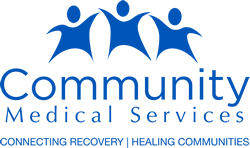Understanding the Different Types of Opioids and Their Effects

Opioids are a class of drugs that play a crucial role in both medical treatment and substance use disorders. From powerful pain relief in hospitals to the ongoing opioid crisis, understanding the different types of opioids and how they affect the body is essential for patients, healthcare providers, and those seeking recovery from opioid use disorder (OUD).
Opioids work by binding to specific receptors in the brain, producing effects that range from pain relief and euphoria to dangerous side effects like respiratory depression. The types of opioids vary widely, from natural substances derived from the opium poppy to synthetic drugs like fentanyl, which is much more potent. In this article, Dr. Sherrick from Community Medical Services explores the different types of opioids, how they work, and their use in both medical and non-medical contexts.
What is an Opioid?
Opioids are a class of drugs that produce their effects by binding to specific receptors in the brain called mu-opioid receptors (MORs). These receptors are responsible for regulating pain and other sensations, which is why opioids are commonly used in medical settings to manage pain. When an opioid binds to these receptors, it can produce a range of effects, including pain relief, drowsiness, and even a sense of euphoria or feeling “high.”
Opioids encompass a wide range of substances, from those used in medical settings to illicit drugs commonly involved in substance use disorders. Some of the most well-known opioids include:
- Morphine
- Codeine
- Hydrocodone (found in medications like Lortab or Norco)
- Oxycodone (including OxyContin)
- Hydromorphone (Dilaudid)
- Methadone
- Buprenorphine (Suboxone, Subutex)
- Heroin
- Fentanyl
Other substances may act like opioids by binding to the same receptors. These include “natural” substances like kratom, which achieves many of its effects by acting on MORs. Opioids vary widely in terms of strength, onset of action, and how long their effects last, but they all act on these critical receptors in the brain.
Opioids vs. Opiates: What’s the Difference?
While the terms “opioids” and “opiates” are often used interchangeably, there is a technical difference between the two. Both opioids and opiates exert their effects by binding to the same receptors in the brain (MORs), but the distinction lies in how the substances are made and their origin.
Opiates
Opiates are a subclass of opioids that are derived naturally from the opium poppy plant. Common examples of opiates include morphine, codeine, and heroin. These substances are extracted directly from the opium poppy and have been used for centuries in various forms for pain relief and other medical purposes.
Opioids
Opioids, on the other hand, include both natural opiates and synthetic or semi-synthetic drugs created in laboratories. These drugs are designed to mimic the effects of natural opiates but are chemically altered or fully synthetic. This category includes hydrocodone, oxycodone, fentanyl, methadone, and buprenorphine.
For example, fentanyl is a fully synthetic opioid manufactured in labs. Heroin, though processed from morphine, is derived from the natural opium poppy plant. Both fall under the broader category of opioids, but heroin is specifically considered an opiate.
The Effects of Opioids on the Brain and Body
Opioids are potent drugs that can produce a range of effects on the body, depending on the dose, the specific opioid used, and an individual’s genetic makeup. These effects can be beneficial in medical settings, such as pain relief, but they also come with risks, mainly when used outside of prescribed guidelines.
Short-Term Effects of Opioids
When opioids bind to mu-opioid receptors in the brain, they can produce a variety of immediate effects, including:
- Pain Relief: Opioids are effective and prescribed for relieving moderate to severe pain.
- Drowsiness: Many opioids cause drowsiness or sedation, which can be beneficial for pain management but dangerous when operating machinery or driving.
- Mental Fogginess: Users may experience impaired cognition or a “foggy” feeling.
- Euphoria: One of the reasons opioids are prone to misuse is the sense of euphoria, or feeling “high,” that some people experience.
- Decreased Breathing: One of the most dangerous effects of opioids is respiratory depression, where breathing slows down. At high doses people can stop breathing entirely, resulting in respiratory failure and death, which is the leading cause of opioid overdose fatalities.
Physical Side Effects
Opioids also produce a range of physical side effects, including:
- Nausea and Vomiting: These are common side effects, especially in people who are new to opioid use.
- Constipation: Constipation is a well-known side effect of opioids, which can become severe with long-term use.
- Dry Mouth and Eyes: Opioid use can cause a reduction in saliva and tear production, leading to discomfort.
- Itchy Skin: Some people experience skin irritation or itchiness when using opioids.
Long-Term Effects of Opioids
Over time, regular opioid use can lead to opioid tolerance, where the body becomes accustomed to the drug and larger doses are required to achieve the same effects. The risk of overdose increases as users may take increasingly higher doses. If a person has developed tolerance to opioids and stops using opioids abruptly, they may experience severe withdrawal symptoms, which can drive continued use to avoid discomfort.
Despite these risks, opioids do not generally cause long-term damage to major organs such as the heart, liver, or kidneys. However, chronic use can result in other issues, such as:
- Decreased sex drive and lower testosterone levels in men
- Chronic constipation
- Excessive sweating
Important Differences Among Opioids
While all opioids act on MORs in the brain, there are significant differences among them. These differences influence usage in medical settings, how they affect the body, and their potential for misuse.
Potency
One of the most important differences between opioids is their potency, which is the amount of the drug needed to achieve a specific effect. Fentanyl is about 100 times more potent than morphine, meaning that a much smaller dose of fentanyl is required to produce the same effect as morphine. Hydromorphone and oxycodone are also more potent than morphine but less so than fentanyl.
The potency of an opioid has significant implications for both its medical use and its potential for overdose. Highly potent opioids like fentanyl pose a greater risk of overdose because even small amounts can be lethal.
Time of Onset and Duration of Action
Fentanyl: when given intravenously, it can take effect within a minute or less. It can be helpful in emergency and surgical settings where immediate pain relief is needed.
Methadone: When taken orally, it may take 2-3 hours to reach its full effect, but effects can last 24 hours or more, It is suitable for managing chronic pain or opioid use disorder.
Hydromorphone (Dilaudid): Has a shorter duration of action with a half-life of 2-3 hours. It wears off more quickly, requiring more frequent dosing.
Differences in Effects
All opioids exert their effects the same way, but individual reactions can vary. The specific chemical structure of each opioid can cause subtle differences in how people experience the drug. For example, a person may tolerate oxycodone well but experience more nausea or dizziness when using hydrocodone. This variability means that doctors personalize the type of opioid a patient receives in a medical setting depending on how they respond to treatment.
Routes of Administration
The way an opioid is administered also affects its onset and duration of action:
- Intravenous (IV): Provides rapid relief, which is why it is often used in hospitals.
- Oral administration: Pills or liquids have a slower onset but provide longer-lasting effects, ideal for managing chronic pain.
- Transdermal patches (like fentanyl patches): Release the drug slowly over time, providing continuous pain relief without the need for frequent dosing.
The Medical Use of Opioids
Opioids are an essential part of modern medical care due to their powerful pain-relieving properties. They are used in various healthcare settings, from hospitals to at-home care, to manage acute and chronic pain. However, their use must be carefully monitored and controlled due to the risks of addiction and overdose.
All opioid medications are classified as controlled substances in the United States, and the Drug Enforcement Administration (DEA) closely monitors them. Even when prescribed for legitimate medical reasons, opioids can lead to physical dependence, addiction, and, in some cases, overdose. For this reason, healthcare providers must carefully weigh the benefits and risks of opioid use for each patient, especially for long-term treatment.
Opioids in Hospitals
In hospitals, opioids are commonly used to manage pain in situations where other pain relief methods may not be sufficient. They are frequently administered in emergency rooms, operating rooms, and intensive care units. For example, opioids are often given during or after surgery to help control severe pain or to manage pain from traumatic injuries.
In these settings, opioids are typically administered through an IV for quick pain relief, especially in acute situations. The controlled environment of the hospital allows healthcare providers to carefully monitor the dosage and manage any side effects, reducing the risk of overdose.
Opioids Prescribed for At-Home Use
Opioids are also prescribed for pain relief outside of the hospital, particularly for people recovering from surgeries or injuries and those suffering from advanced cancer pain. Commonly prescribed opioids for at-home use include hydrocodone and oxycodone, which are taken orally in pill form. These drugs are typically prescribed for short-term use, helping people manage pain during the recovery process.
Most people who are prescribed opioids for short-term pain relief do not develop a problem with opioid use. Once their pain improves, they can stop taking the medication. However, this doesn’t entirely mitigate the risk of misuse, especially if opioids are taken for longer periods or at higher doses than prescribed.
Opioids for Chronic Pain
Some individuals suffer from chronic non-cancer pain, such as back or neck pain, arthritis, or chronic headaches. Historically, opioids were commonly prescribed for these conditions, but recent research has shown that opioids are only minimally effective for long-term pain relief in these cases. Over time, the body develops a tolerance to opioids, meaning they become less effective and require higher doses to achieve the same level of pain relief. This increases the risk of addiction, overdose, and severe side effects.
Today, opioids are less commonly prescribed for chronic pain, and healthcare providers are encouraged to explore alternative treatment options like physical therapy, non-opioid medications, and other pain management techniques.
Understanding Opioid Use Disorder and Addiction
While opioids are invaluable in treating pain, their potential for misuse and addiction is a major concern. Opioid use disorder (OUD) is a medical condition characterized by the compulsive use of opioids despite the harmful consequences. This disorder can affect anyone, even those first introduced to opioids through medical treatment or illicit drugs.
OUD occurs when an individual develops a dependence on opioids, which can include prescription medications like oxycodone or illicit drugs like heroin. As people use opioids over time, they often build up a tolerance, which can quickly lead to addiction. Those who have OUD become fixated on obtaining and using opioids despite the negative impacts on their health, relationships, and daily lives. OUD is characterized by:
- Cravings: A strong desire or urge to use opioids.
- Loss of Control: Inability to regulate opioid use, often leading to taking more than intended.
- Tolerance: Needing increasing amounts of opioids to feel the same effect.
- Withdrawal: Experiencing uncomfortable physical and psychological symptoms when not using opioids.
Historically, heroin and oxycodone were the most commonly used opioids among those with OUD. However, in recent years, fentanyl has overtaken heroin as the most widely used opioid. Fentanyl is a synthetic opioid that is much more potent than heroin, and even small amounts can cause overdose and death. The widespread availability of fentanyl, often illegally manufactured by drug cartels, has contributed to a sharp increase in overdose deaths. This shift to fentanyl use is partly due to changes in medical prescribing practices. As medical providers have become more cautious in prescribing opioids, many individuals with OUD have turned to illegal sources, where fentanyl is often more readily available than heroin.
The Challenges of Overcoming Opioid Addiction
Stopping opioid use after a dependence or addiction has developed is extremely difficult. People with OUD face intense cravings and severe withdrawal symptoms when they stop using opioids, including nausea, vomiting, diarrhea, muscle pain, anxiety, and insomnia. The discomfort from withdrawal often drives people back to opioid use, creating a dangerous cycle.
The severity of withdrawal symptoms can vary depending on the length of opioid use, the type of opioid, and the individual’s health. These symptoms often begin within hours of the last dose and can last several days or weeks. The fear of withdrawal is one of the main reasons why many individuals with OUD find it challenging to stop using opioids without help.
The risk of overdose is exceptionally high after a period of abstinence, such as following a detox or short-term recovery. Because opioid tolerance decreases abstinence, individuals who return to using opioids may accidentally take a dose that was previously tolerable but is now enough to cause a fatal overdose.
Effective Treatments for Opioid Use Disorder
Fortunately, there are effective treatments for OUD. FDA-approved medications such as methadone, buprenorphine, and naltrexone can help individuals manage cravings and withdrawal symptoms. These medications work by interacting with the same receptors in the brain as illicit opioids, either reducing withdrawal symptoms or blocking the effects of other opioids.
- Methadone is a long-acting opioid that is used in controlled doses to help individuals reduce their dependence on more potent opioids. It helps manage withdrawal symptoms and cravings without producing the euphoric high associated with opioids like heroin or fentanyl.
- Buprenorphine, the active ingredient in medications like Suboxone, Brixadi, and Sublocade, is a partial opioid agonist that works by activating the same receptors in the brain but to a lesser degree than full opioids. It helps reduce withdrawal symptoms and cravings while lowering the risk of overdose.
- Naltrexone, unlike methadone and buprenorphine, is an opioid antagonist that blocks the effects of opioids. Naltrexone can be taken after detox to prevent relapse, as it stops illicit opioids from binding to receptors in the brain.
Medication-assisted treatment (MAT), combined with counseling and behavioral therapies, is the most effective approach to treating OUD. MAT helps individuals stabilize and regain control of their lives, reducing the likelihood of relapse and overdose.
Get Help for Opioid Addiction at Community Medical Services
For individuals struggling with opioid addiction, getting the right help can make all the difference. Community Medical Services provides comprehensive treatment for OUD, offering a combination of medication-assisted treatment, counseling, and support services designed to help patients regain control of their lives and overcome addiction.
We offer FDA-approved medications like methadone, buprenorphine, and naltrexone to help manage withdrawal symptoms and cravings, making it easier for patients to stop using opioids safely. These medications are administered in a controlled medical environment, ensuring that patients receive the proper dosage to prevent misuse and overdose. In addition to MAT, we provide counseling and peer support groups to address the underlying emotional and psychological aspects of addiction and connect patients with a like-minded support community. Counseling helps patients develop coping strategies, build resilience, and address any co-occurring mental health issues that may contribute to their substance use.
At CMS, patients have access to a full range of services that support their recovery journey:
- Individualized treatment plans tailored to each patient’s specific needs and circumstances.
- Supportive counseling and therapy to help patients navigate the emotional challenges of addiction and recovery.
- Access to life-saving medications that help manage cravings and reduce the risk of overdose.
- Safe and compassionate care provided by trained healthcare professionals who understand the complexities of addiction.
CMS focuses on helping patients “stay alive and thrive,” emphasizing harm reduction, relapse prevention, and long-term recovery strategies. If you or a loved one are ready to break free from the cycle of addiction, find a CMS clinic near you to begin your journey toward an opioid-free life.

About the Author
Dr. Robert Sherrick was appointed as CMS’s first Chief Science Officer in 2023, transitioning from Chief Medical Officer, a role he served for years.
Prior to serving CMS he had experience working at an inpatient addiction treatment facility in Montana, Pathways Treatment Center, treating all forms of Substance Use Disorders and dual diagnosis patients. Dr. Sherrick has been providing Medication Assisted Treatment for Opioid Use Disorder since 2003, initially in an office setting using buprenorphine and subsequently with methadone in Opioid Treatment Programs.
He established a state-wide buprenorphine treatment program for VA Montana with an extensive focus on telemedicine. He is board certified in Addiction Medicine through the American Board of Preventative Medicine and is the Immediate Past President of the Northwest Chapter of the American Society of Addiction Medicine.
Dr. Sherrick received his MS and BS degrees in Electrical Engineering from the Massachusetts Institute of Technology, and his MD from George Washington University Medical Center.
Related Content
Revolutionary Program Gives Inmates New Hope
Inmates in the Ohio Department of Rehabilitation and Correction have a unique opportunity to receive high-quality drug-addiction treatment, thanks in part to an innovative program introduced by Community Medical Services (CMS).
Fentanyl Fueling Next Wave of Opioid Crisis
“Take even a small amount of fentanyl and you could die.” It’s a harsh message, but one that John Koch, director of community engagement at Community Medical Services (CMS), is determined to get out in the community as deaths from fentanyl use continue to climb around the U.S.
Stigma and Why It Must Be Stopped
Science shows that an opioid use disorder isn’t about weakness, personal or moral failure, or even a lack of willpower. Understanding that OUD isn’t always a choice can be a first step towards stopping the stigma.




